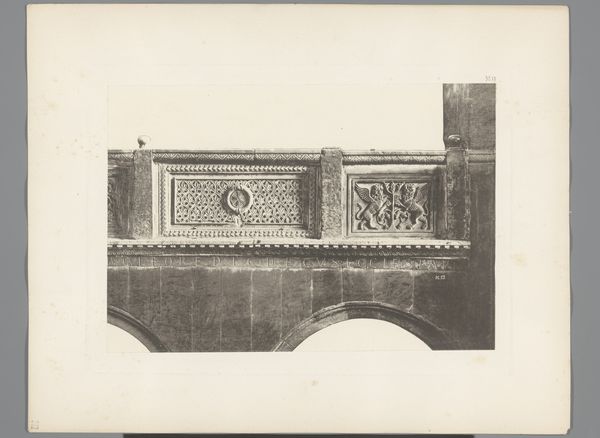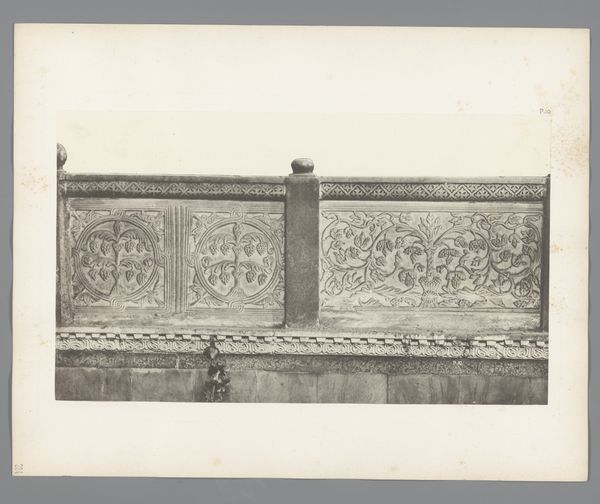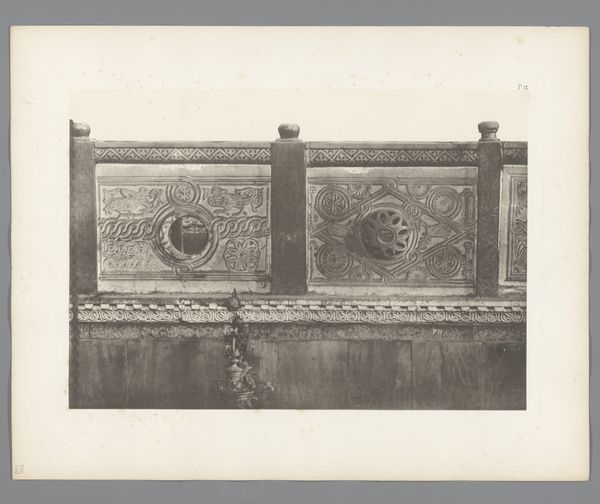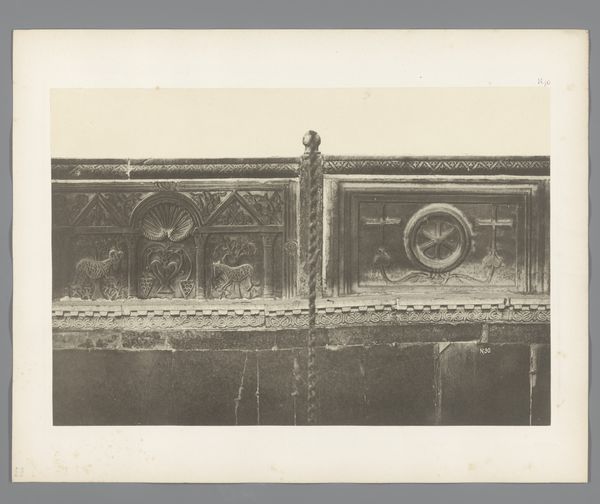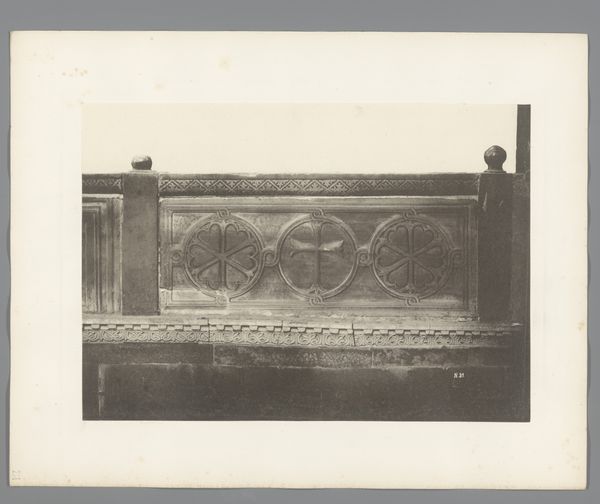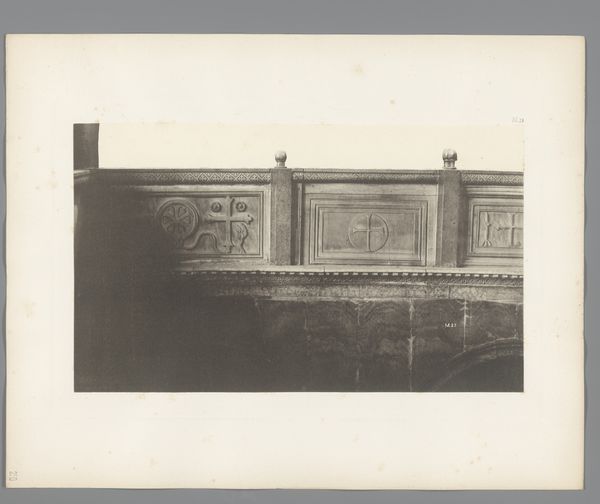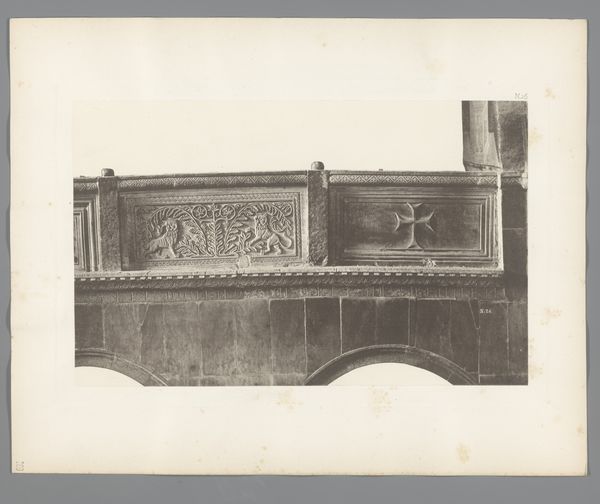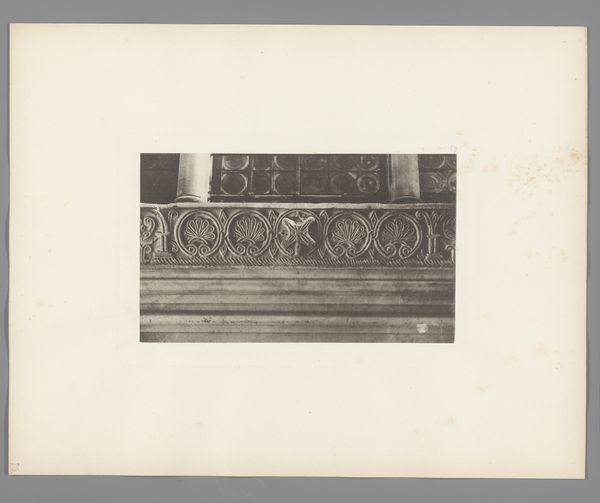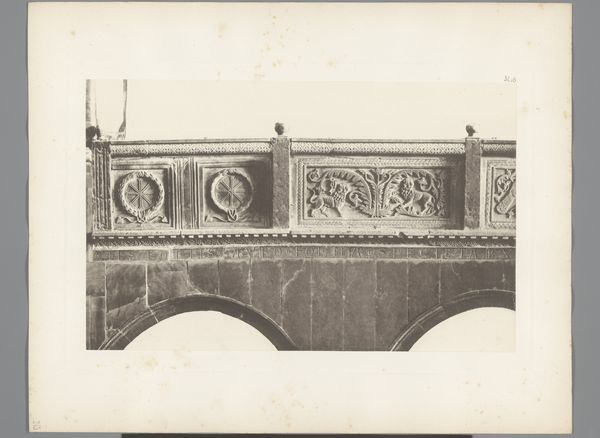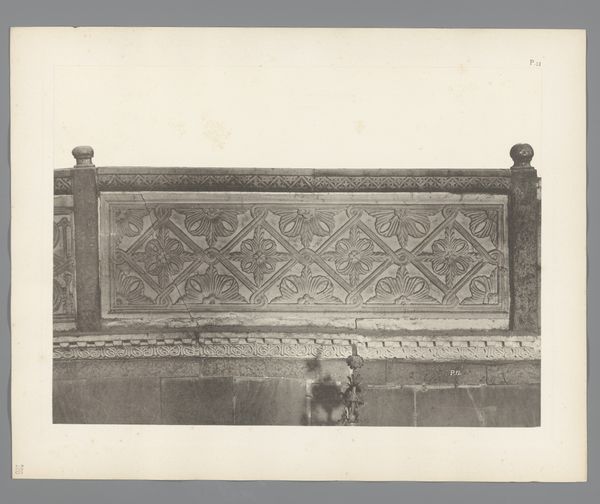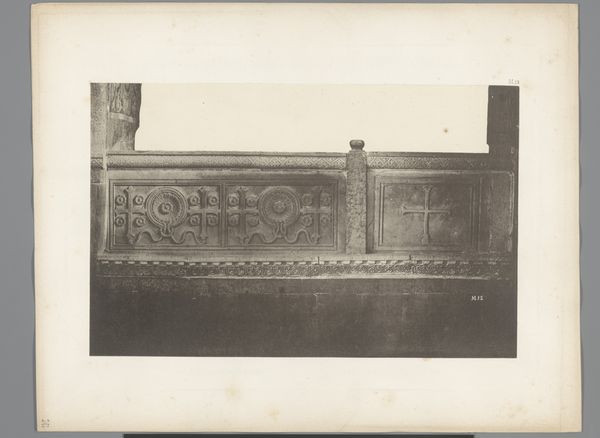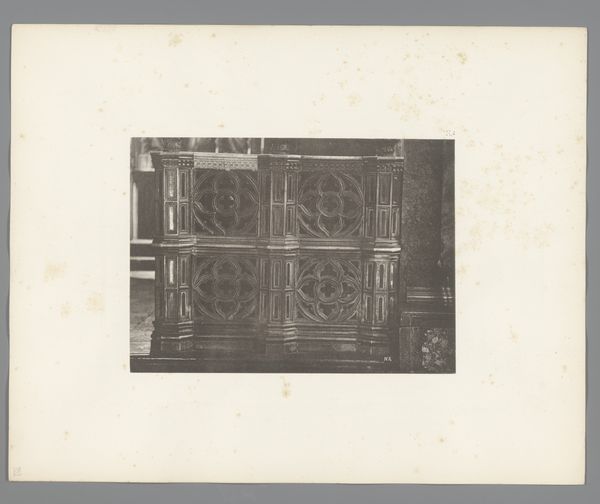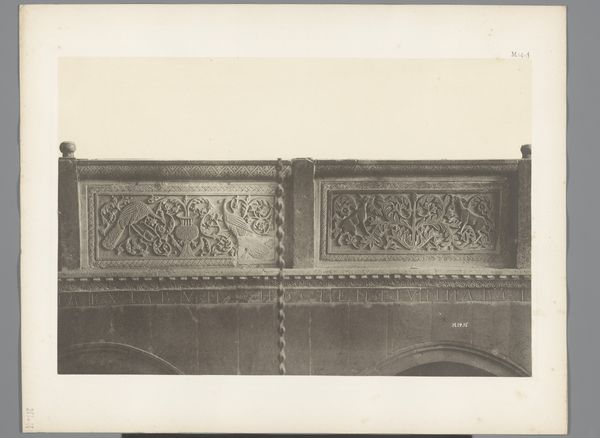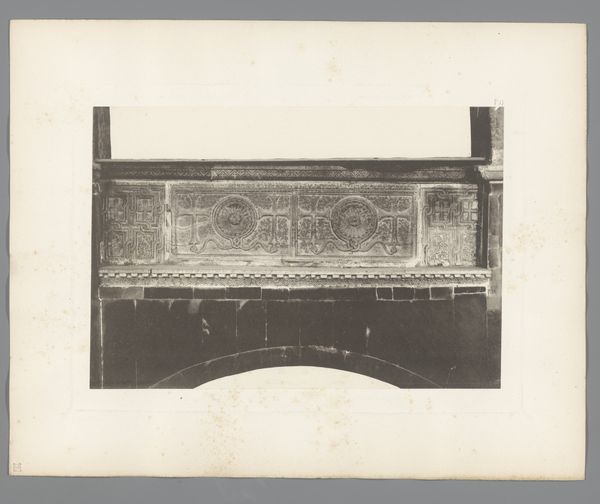
Dimensions: height 311 mm, width 395 mm
Copyright: Rijks Museum: Open Domain
This photograph of a balustrade in Venice's San Marco, was captured by Carl Heinrich Jacobi sometime in the mid-19th century. Jacobi was part of a wave of artists documenting European architecture, often framing it as a symbol of cultural and historical identity. Here, the balustrade stands as a silent witness to Venice's layered past, a city that was then a crossroads of trade, power, and cultural exchange. The relief carvings, frozen in stone, hint at stories of Venetian glory and its intricate dance with Byzantine and Renaissance influences. Consider the stone itself, quarried and transported, shaped by artisans whose identities are now largely obscured by history. How did their class and status affect their contribution to such iconic structures? The balustrade transcends its function as a mere barrier. It becomes a stage upon which narratives of power, identity, and artistic expression play out. It's a place of contemplation, where personal experience meets the grand narrative of history.
Comments
No comments
Be the first to comment and join the conversation on the ultimate creative platform.
